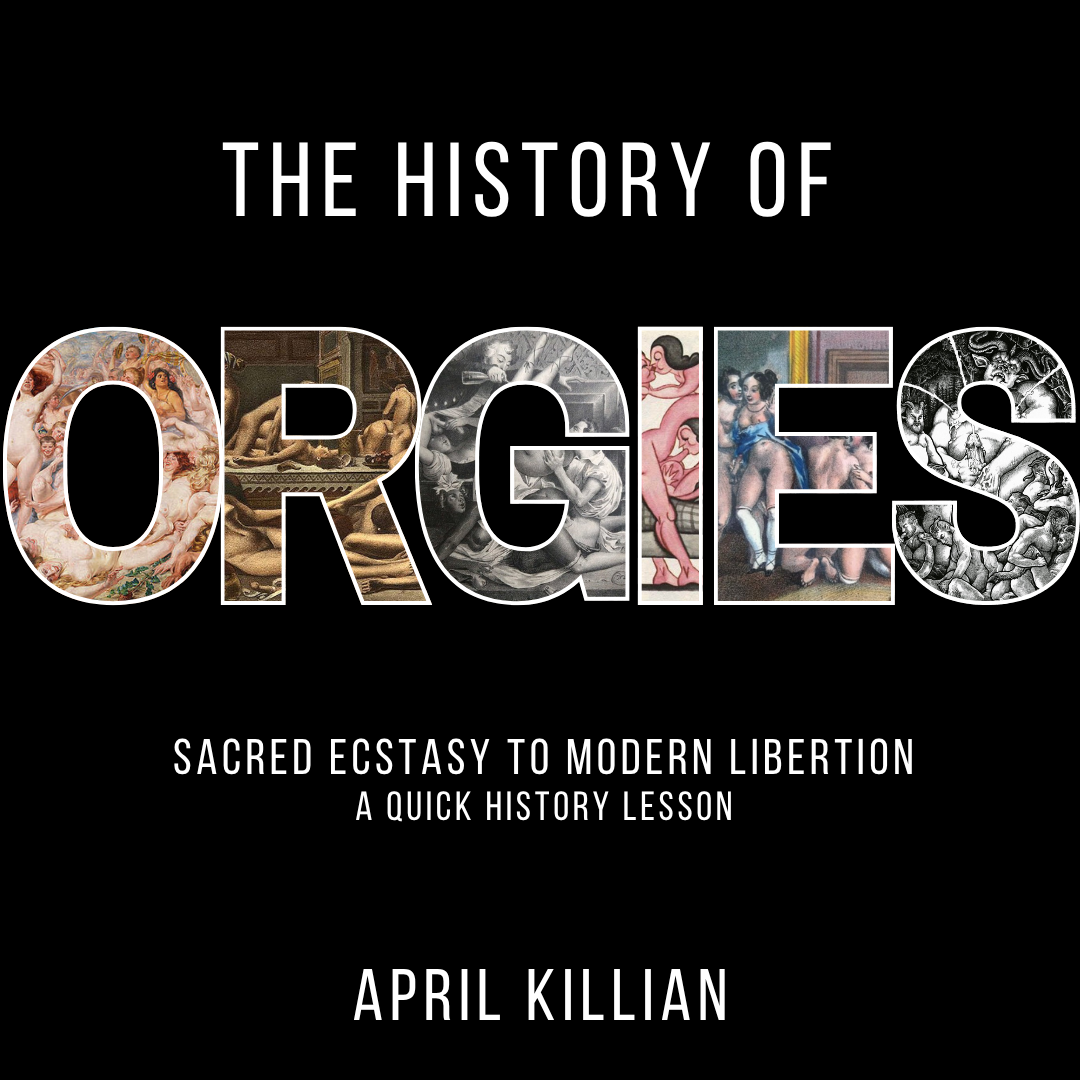The History of Orgies: From Sacred Ecstasy to Modern Liberation

Throughout history, collective pleasure has held a strange power, both feared and desired, condemned and worshiped. The orgy, in its purest form, has always been about more than sex. It is about communion, freedom, and was also about the unraveling of control. From the sacred rites of ancient Greece to the glittering salons of Versailles, and now to the revival of sensual gatherings in modern cities like Montreal, the orgy tells a timeless story of our relationship to desire, divinity, and power.
Antiquity: Women, Ecstasy, and the Divine in Ancient Greece
Long before the word “orgy” was whispered in scandal, it was a sacred act of worship. In ancient Greece, the term orgia described secret rituals dedicated to gods such as Dionysus and Demeter, ceremonies that celebrated the cycles of nature, fertility, and transcendence through ecstasy.
These rites were exclusively female spaces, a rare sanctuary in a patriarchal world. The participants, known as maenads or bacchantes, would abandon the cities and retreat to forests or mountains under moonlight, crowned with ivy, draped in animal skins, and holding thyrsi, ritual staffs symbolizing fertility and power. There, they would sing, dance, and drink wine until consciousness blurred into divine frenzy.
Within these sacred orgia, women held power, they were priestesses of emotion, guardians of life’s cycles, and channels of Dionysian energy. It was said that in their ecstatic state, they could speak prophecies or tear apart what symbolized oppression. The orgy was not debauchery: it was the embodiment of freedom, a mystical revolt against order and control. Yet over time, male fascination and jealousy began to intrude. The mysteries that once celebrated feminine freedom became the target of suspicion and control. As men forced their way into these rites, the balance shifted: what had been ecstatic sisterhood transformed into scenes reshaped through the male gaze. The spiritual dissolved into spectacle, and the sensual freedom of women was gradually redefined through patriarchal desire.
When male chroniclers later tried to describe what they were forbidden to see, they recast these gatherings as wild and dangerous. But the truth of the orgia was far more profound: they were acts of female liberation, celebrations of sensuality and spirituality intertwined, centuries before the language of feminism existed.
Rome: Power, Pleasure, and the Politics of the Body
When Greece fell and Rome rose, the sacred turned imperial. The Romans adopted the Dionysian traditions and transformed them into spectacles of excess. The original mysteries of the god became the Bacchanalia: a public festivals where wine, performance, and physicality blurred the lines between reverence and indulgence.
By the time of the emperors, orgies were no longer about divine ecstasy but human dominance. In the marble halls of the elite, pleasure became a theater of power. The body was both a currency and a weapon. Emperors like Nero and Caligula turned the ritual into performance: lavish banquets that flowed from feasting to frenzy, where every desire could be purchased, commanded, or consumed.
For women, the dynamic was double-edged. Roman women of status were expected to be chaste in public, yet many participated privately in these scenes of erotic autonomy, especially within circles of the aristocracy and priestesses of Venus. In contrast, enslaved women were often exploited; symbols of submission within a culture that equated domination with control. Still, some women wielded their sensuality as influence, shaping politics through intimacy, turning subjugation into quiet rebellion.
If Greek orgies celebrated the union with the divine feminine, Roman orgies celebrated the power to own it. They were about hierarchy, spectacle, and the endless appetite of empire, basically a mirror of Rome itself.
The Courts of Europe: Silk, Secrecy, and the Theatre of Decadence
Centuries later, pleasure found its way back into the halls of power. The 17th and 18th centuries in Europe, particularly in France and Russia, saw a dazzling return to erotic pageantry.
At Versailles, where every gesture was a performance, kings and courtiers mastered the art of pleasure as politics. Under Louis XV, petites maisons, lavish private apartments, were built for clandestine affairs. Here, noblewomen and courtesans became icons of sensual refinement, wielding eroticism as social strategy. The Parc-aux-Cerfs, rumored to house the king’s secret harem, became infamous not only for excess but for the subtle power women held in seduction, influence, and intellect.
In the salons, women like Madame de Pompadour and Madame du Barry blurred the lines between muse and monarch, orchestrating erotic circles where wit, art, and sensual freedom thrived. The body was adorned as language: corseted power, jeweled rebellion. Pleasure became philosophy, as libertine thinkers like Diderot and Sade declared that desire itself was a form of truth.
In Russia, the nobility’s fascination with French customs brought similar indulgences to St. Petersburg’s glittering palaces. Under Catherine the Great, the Russian court became a playground of political seduction, where alliances were forged as often in bed as in council.
Palaces became stages for intimacy and negotiation. The orgy, once a sacred ceremony, was now a secret performance of control and vulnerability, a ritualized dance between submission and sovereignty.
Today: The Return of the Orgy
In the modern age, the orgy has re-emerged from centuries of shame and silence. As society continues to reclaim sexual expression, communal pleasure is being reborn, this time with intention, consent, and inclusivity at its core.
From exclusive sex clubs in Paris, Berlin, and Montreal, to private courtesan circles and tantric gatherings, the orgy is finding new meaning: neither religious nor royal, but deeply human. It’s no longer about domination or display, but connection, exploration, and liberation from isolation. In a world fractured by digital disconnection, these curated spaces of sensuality offer something revolutionary: presence.
Especially in the Montreal courtesan scene, a quiet renaissance blooms. Artists, sex workers, and sensualists are reclaiming the language of pleasure as art and activism, spaces where bodies are celebrated, boundaries honored, and desire becomes dialogue. April Killian has organized over 25 parties of the sorts over the last 10 years, uniting people from all over the world in a safe space to discover sexually and liberation from shame. Her events have left people transformed and connected.
Just as ancient priestesses danced for Dionysus, today’s gatherings echo that same truth: pleasure is sacred, the body is not shameful, and communion, be it spiritual or physical, remains one of humanity’s most powerful acts of resistance.
